This Bike Tinkerer’s Toolset
This subject came up last week on our reader forum, and a number of readers asked that I follow through on my threat to write an article on bike tools for home use. So here you go, and this comes with caveats: I’m sure I’m missing some important tools; and I’m not a bike mechanic.
That said, I built a Diamondback Andean last week with Shimano 9150, with a Rotor crank and BB, and tested a number of disc brake caliper and rotor options on it. On a second bike stand I built a Scott Plasma Premium with SRAM Force 1 (1x) at the same time; and in a former life I did own a bike manufacturing company with the actual factory that made the bikes, so I’m not without some bike assembly skills.
Furthermore, I'm constantly swapping out parts on these framesets in order to write about them, and I need tools to accomplish all of this.
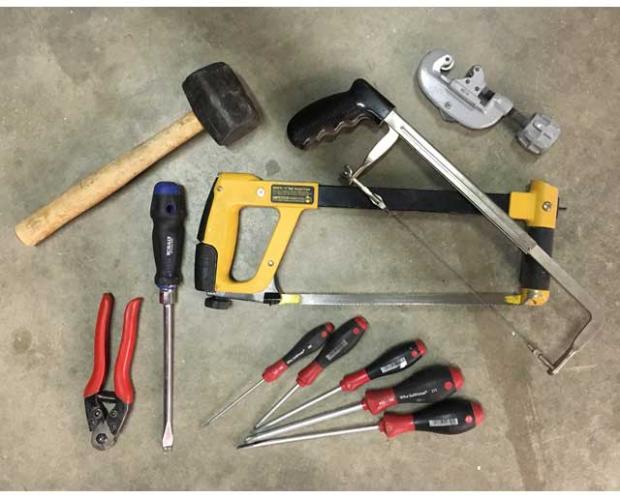
But I’m serious. I’m not a mechanic. John Burke and Mike Sinyard own bike companies too, orders of magnitude larger than mine ever was, and I doubt any of the three of us could get a job wrenching in a bike shop (I know I couldn’t). I’m a tinkerer. So, the tools I list here are tinkerer’s tools.
Omitting the general tools you need
The list here omits what I think any man-skills man would own, such as a solid workbench, with a solid vise on it (when you look at the miter block below, realize this goes into a vise – no vise, no using the miter block). Typical stuff like good screwdrivers, handheld motorized tools like drills and accompanying bits, a Sawzall, pliers, open end and socket wrenches, rubber mallets, and measuring tools like levels, a couple of micrometers, tape measures. For big dumb stuff like your vise you can probably get these at Harbor Freight or Northern Tool. For stuff that requires hardened metal – like screw drivers and drill bits – maybe go a step up. I also use the heck out of a bench grinder, which is a tool just dumb enough that Harbor Freight will do you.
You’ll need a hack saw and here are a couple in the pic above, one with a 32 tooth-per-inch blade and the other with an abrasive blade for cutting carbon. Either will cut carbon fine as will a Sawzall as long as the blade is fine enough. Just, those abrasive blades for Sawzalls aren’t going to fit inside the slot in your miter block.
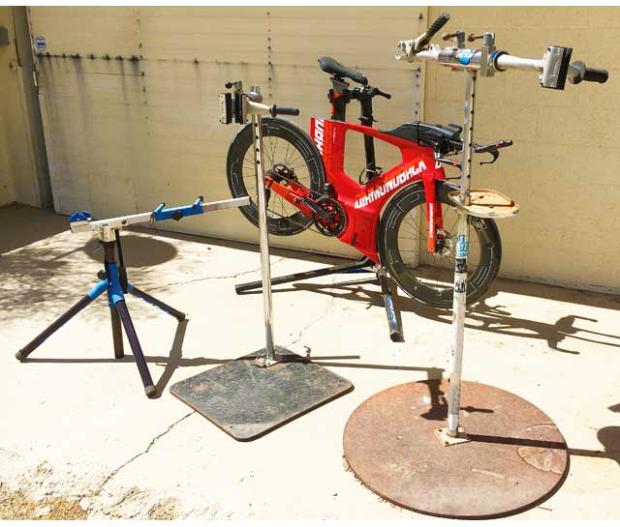
The tools in the image highest above are in that “general tool” variety with a couple of exceptions. One of the key tools you’ll use over and over are a good set of “side pulls” for cutting cables. If you’re going to spend a bit if extra money, the first 2 things that you’ll want to splurge a little on are side pulls and your bike stand (we’ll get to this next). Mine are Felco side pulls and you’ll spend $55 or $60 on a set of these. You can get some very good cable cutters from Park Tool for $35 and if you want to get going easy, cheapies will cost you $15.
The other thing you’ll see in that image highest above is a tubing cutter and I don’t see any reason to splurge on this. Just, if you end up cutting aero aluminum extensions these are what you’ll want for a nice clean cut.
The Bike Stand
I’ve owned a lot of bike stands. All kinds of bike stands. There are a few of them above, and I’ve got twice this many. You can go with the fork mounts and the real heavy duty stuff, but I keep coming back to the Park PRS-25, which is holding that Diamondback Andean. That’s about a $300 stand. It folds up very modular, is very light and portable, but is very sturdy. You can’t beat this stand, though Feedback Sports and other companies make very good stands. Park has a “home” variety that I haven’t tried but it looks very much like the PRS-25 above and it’s a $185. It’s the PCS-10. Looking at it, I can’t tell any difference between this and the PRS-25. Note I’m grabbing this Andean by the seat post. This Park has a very forgiving set of jaws. You don’t need to clamp down hard on the seat post. I don’t have good luck with the fork mounts because tri bikes have very funky bottom bracket shapes and BB-mounted rear brakes.
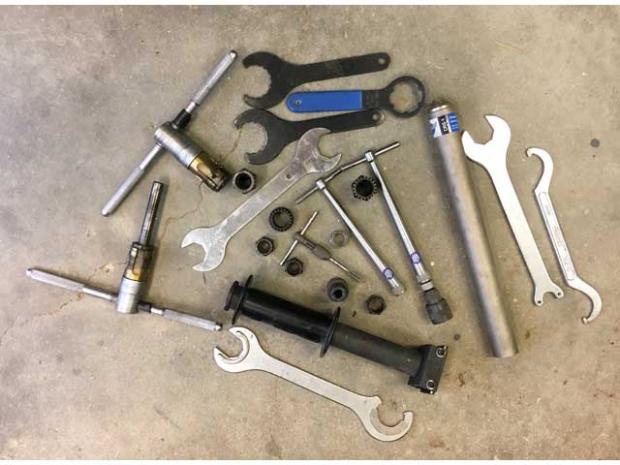
I post the image above to show you some of the tools I own that you don’t need. See all of that stuff? Pass it by. I’ve got headset and bottom bracket facing tools, bike specific taps which are very expensive, but you aren’t riding steel bikes any longer so you don’t need to face and tap surfaces the way we used to prep our bikes in the old days.
See those large-mouth wrenches, 30mm, 32mm and the like? We aren’t using those sorts of headsets with lock rings and top caps, and I haven’t used any of those wrenches in many years. There are some really nice bicycle tool sets that start at around $100 that have all sorts of great tools, but they also have some of these bottom bracket spline tools and large bike-specific wrenches that we just don’t need.
Bike Specific Tools
In this image just below you'll see my initial list of the bike-specific tools you will need. If you get a deep enough spline tool you can use it to take off cassette lock rings both for standard quick release wheels and wheels with thru axles. I’ve got that one works for both. You use the same spline tool for Shimano’s Centerlock disc rotor lock rings (the lock ring that clamps the rotor onto your wheel's hub). These are cheap buys. If you spend more than $10 on a spline tool, why? You’ll need it to either work with a 1/2” drive (shown) or you put a spanner or open end wrench over it. I like the 1/2” drive type the best, because a wrench can slip off when you're torquing it. This spline tool works in conjunction with a chain whip. You need both the spline tool and a chain whip to take off a cassette.
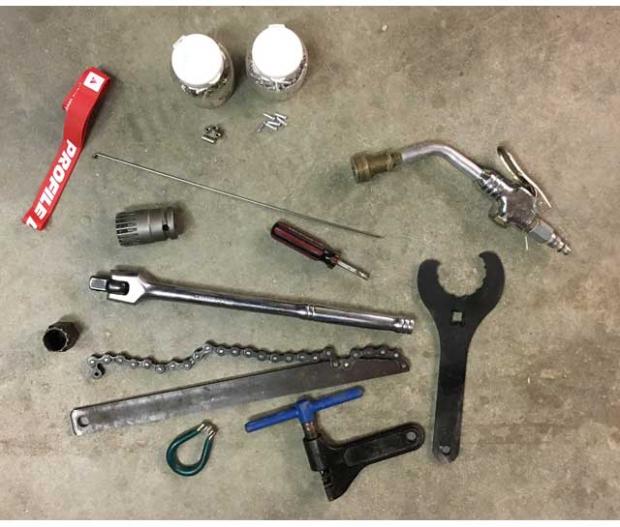
That thing with a screw driver handle is a presta valve core remover (for putting in sealant). Then there’s a chain tool, a Shimano (well, in this case this one’s made by Rotor) BB tool (if you're intsalling a BB with threads instead of one that just presses in, i.e., PressFit), a bottle of 5mm ferrules and 5mm crimp-on cable ends. You always need to have some rim strips around, this is a Profile Design, you can get Continental in rolls, like a roll of plastic or duct tape. Getting a lot of flats in a row? Check to make sure your rim strip hasn’t moved exposing even a tiny bit of a spoke hole. That’s why I keep rim strips always handy.
In that image is a presta valve chuck for an air compressor. Set the compressor to 95psi or whatever floats your bat and, whammo, instant inflated tire. I’ve got a little pancake compressor I use for this as well as for my other pneumatic tools (framing nailer, brad nailer, pneumatic stapler and so on). There’s a spoke wrench in that image, I have these in 3 sizes, but I use these less and less as the wheel makers have their own ways of tensioning spokes. But, speaking of spokes(!), you’ll see a loose spoke there. I use these a lot. The elbow end I use for fishing cables out of aerobar extensions, pursuit bars, and frames. The other end, I often grind this down to a point and when I cut cable housing I push the spoke in there to make a flattened opening round again. (And I use that “spear” end for a number of other useful jobs.)
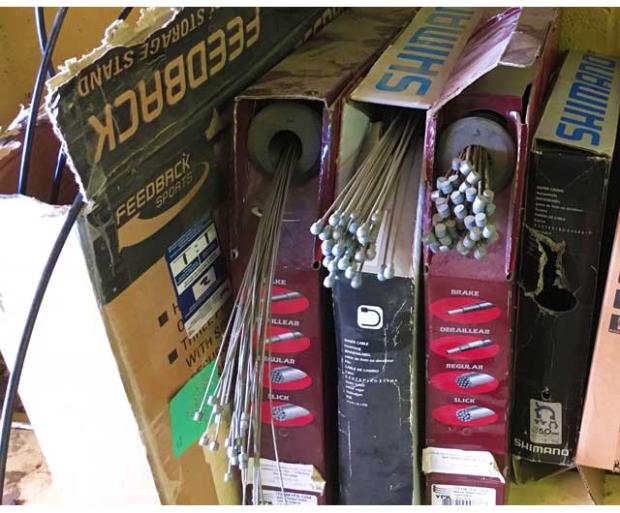
Now, cables, here’s where you could get into some serious money. You’ll have to shop around, wait around, to get some good buys on bulk cables like this. The one thing I’d tell you is that for brake cables you’ll probably want double-ended, with the two ends shown in the pic above, so that you can cut whatever end off you don’t need (the "barrel" end is popular with many MTB levers). Brake cable housing is 5mm, and you want to use brake cable (mostly) and brake housing (always) for brake routing. Shift housing is 4mm and the shift cables you see in my image are 2000mm long. What you want is 2500mm or 2700mm or something like that (at least 2300mm long). The Scott Plasma Premium I just built? It’s got just over 2000mm of cable run from the bar-end shifter to the rear derailleur. None of these bulk cables I have would have worked – too short. That’s a tri bike for you!
Plus, a cable of 2300mm or longer is not just a bike component, it’s a tool. If you need to fish housing through a bike you may need to run the cable through first and then use that cable as a guide for the housing. You’ll need the cable to run through end entire run of housing and then you’ll use the cable to pull the housing through. You may need a long cable for that. So, even if you are a confirmed electronic shifting person, you'll still need a few of those long cables around just for fishing internal housing through a frame.
Wrenches
What you see here are cone wrenches and this set from Park is great. It’s got everything from 12mm to 18mm. Except I just found out I now need something like a 19mm or 20mm cone wrench for Shimano’s 1-button bar-end shifter. The documentation said 17mm but nope.
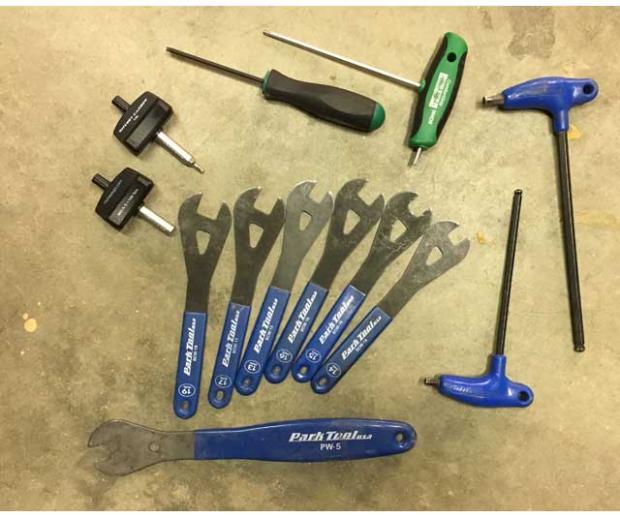
There’s a pedal wrench there and I’ve seen pedal wrenches that double as chain whips (chain is attached to the other end). Then of course you need everything from 1.5mm to 10mm in Allen keys. Why 10mm? Some crank and crank dust cover assemblies. You need an 8mm also for cranks and for many pedals, like Shimano and Look KEO. You need ball end on one side, standard as well, and you need to use the ball end only when necessary. Don’t overuse that – you’ll round the bolt heads.
I would also recommend a standard set of Allen wrenches that don’t have that nice ergo grip, because that grip gets in the way sometimes. At the top of the image are a pair of Torx T25 wrenches, you’re going to need those (Zipp, SRAM, Quarq and more and more companies use Torx), as well as a couple of Ritchey torque keys. Those are 5nm and you can put several bits in there, Allen or Torx.
Lubes, Sealants & Adhesives
I’m not going to get into a big religious debate with you people! I don’t care whether you use Squirt or WD40; Pedros or 3-in-1; Park or Morgan or Finish Line. That’s a separate discussion. Just, here’s what I’m saying: You lube, with oil, every moving surface, everything that rubs against something else in a repetitive fashion (chain pins and plates, derailleurs, brakes). You grease everything that’s threaded. Get that? Grease threads (pedals, where the derailleur threads into the dropout).
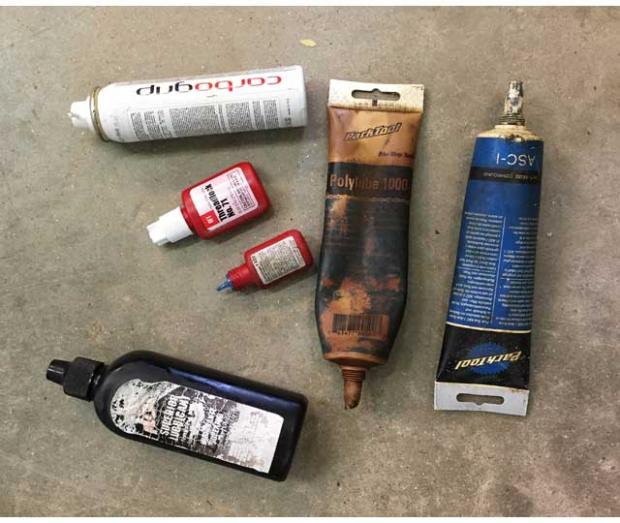
But in some cases you don’t grease. In some cases, smaller bolts, that might come unscrewed given enough time and vibration, you need to make sure those threads are secure. So, I always have Blue Loctite and Red Loctite or if you want the generic it’s just “thread locker”. I use Blue for almost everything, but in a very few cases, where it’s going to be permanent, then it’s Red.
There is just about no threaded thing on a bike I assemble that doesn’t get some treatment: anti-sieze, grease, or thread locker. While I am no mechanic, my bikes don’t fail. They don’t break, they don’t come apart, they don’t unthread. Very, very few times in my 40 years of cycling, racing, making bikes, getting bikes ready for the pros I work with, has a bike ever failed during a race. One reason is because every thread gets something. Some treatment. Those screws that hold brake and derailleur cables? Those too.
The rest
There are a few other necessary tools, for pressing and extracting things. What you see here is a headset press I’ve had for about 30 years and Park still makes this same tool. I use it for PressFit bottom brackets. Those two tubes with the splayed ends? They’re extractors. The splayed end sits against a BB or a bearing and you whack the other end with a rubber mallet. There’s also a little bearing puller in the image. And then there’s my trusty miter block. I use this for so much stuff – bike and non-bike – I don’t know what I’d do without it.
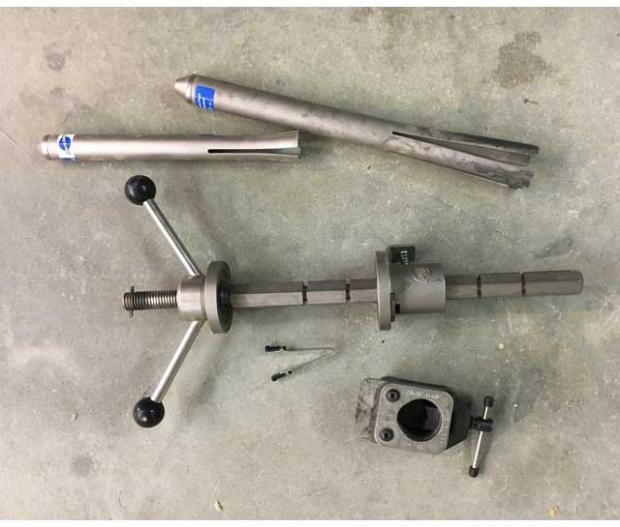
Let’s talk about what all of this costs. Here are some prices on some of these parts, from X-Tools, Bikehand and IceToolz:
BB Press: $43
Miter block: $20
Side pulls: $15
Chain tool: $35
Cassette spline tool: $6
Race Extractors x 2 sizes: $30
Sidepull cable cutters: $15
Cone wrench set, 12mm to 19mm: $20
T25 wrenches: 17
Allen wrench sets (T handle set and elbow set): $40
Chain whip: $8
Pedal wrench: $15
Oil, grease, degreaser, threadlock: $35
The above totals $299. You might be able to get these cheaper if you buy a set for $50 or $80 or $100 that has a lot of these tools in it. You’re going to get some tools you don’t need but so what as long as you get a break on the tools you do need?
You aren’t done yet. You need a bicycle repair stand. You can spend $50 on these, or you can spend upwards of $200 on a Park or a Feedback. I don’t know how well the cheaper ones work. I do know that a good workstand pays for itself. The three price breaks are $50 (overseas bargain); $200 (solid home use); $300 (portable professional use).
Otherwise, as regards the items above, most of what you see in the pictures I took I’ve own since the 1980s and 1990s. If you buy quality tools from Park, Felco, Feedback Sports, they tools will outlive you. You’ll pass them down to another generation. Each of the tools above can be bought at or below the prices I list, but the prices go up as you look to the premium vendors. Just, I have Campagnolo, Park and VAR and Felco tools that I’ve owned for 25 and 30 years and they’re as good as new. Will tools made by these other companies last that long? I don’t know. Do they need to last that long for you? I don’t know.
Then we have consumables. Cables, housing, ferrules and whatnot. I probably own $500 worth of housing and cable. But you don’t need to own all this. I saw a box of 100 aluminum crimp-type cable ends on eBay for $1.49, 100 ferrules, 5mm, for $1.98, and a box of 36 stainless spokes on Amazon for $14. I don’t know that I would buy cheap no-name shift cables from the Orient on eBay (ferrules yes, shift cables no). I do see 100 pieces of 2300mm shift cable for $80 to $100 for first quality stainless, and about $50 for galvanized. I’d just hunt around and wait for my best deal on stainless, at least 2300mm long if it’s for tri or if it's used as a tool. If you don't need to keep a boatload of cable and housing around just buy about 30 meters of both brake and shift housing (it’s often sold in 30 meter rolls), and to keep maybe 10 each brake and shift cables around.
Finally, tape. The price of rim tape I just don’t understand. I see rim tape for $8. For one wheel! Are you kidding me? I also saw bulk 26” x 20mm Kenda rim tape on eBay for $4.95 and I don’t know how many you get but that’s more my style. Maybe there’s some magic to rim tape. I doubt it. Oh, and you need lots of black plastic tape. That’s a Harbor Freight thing. Buy a half-dozen rolls or more at a time.
Which brings me to my final point, which is that tools are tools. They’re not bike tools. They’re tools. Sometimes if you jump out of the bike industry you fall into better pricing. Do you shoot air guns? Are you a home brewer? Do you make your own club soda? You may well use threaded or unthreaded 12 gram CO2 cartridges, which are exactly what I need to inflate bike tires. I don't shop for bike CO2 cartridges. I shope for CO2 cartridges, and I can usually find them for $.50 each if I buy a fair number.
There is a bit of freedom that comes with working on your own bike. You can fix what needs fixing yourself. You take comfort in the knowledge that you know what makes your bike tick, and that you’ve battened down its hatches as well as can be done. The tooling you need is now cheaper that it was a generation or two ago. It’s all very uplifting until you cut a steerer too short. Which we’ve all done. It’s a rite of passage.
I encourage all you expert home mechanics to begin or add to an existing thread on our forum with your own suggestions (with pictures!) of tools you need and use.


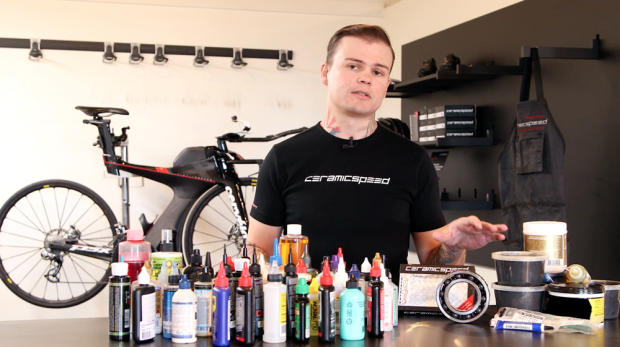
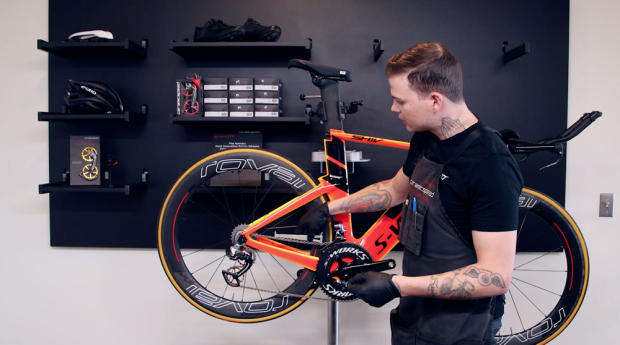
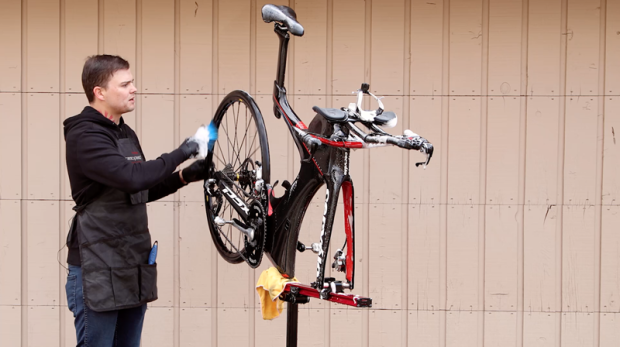
Start the discussion at slowtwitch.northend.network